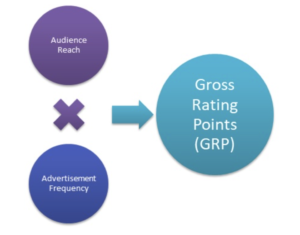Leveraging Convergence to Boost Your Advertising Sales
Digital transformation and post-pandemic media trends pose a dilemma to marketers and advertising buyers. As predicted, U.S. media advertising buying rebounded strongly in 2021, owing to a 35% surge in digital advertising sales. However, as digital media consumption continues to rise, traditional media – television in particular – still garners 53% of global advertising spending. Advertisers need to use both traditional and new digital media channels to achieve effective reach.
For publishers, the predicament of ad buyers in this transition period represents an opportunity to consolidate the sale of their ad inventories across channels. Advertising professionals know this consolidation process as the digital-linear convergence of ad spaces. Publishers who develop the means to manage digital and linear ad space convergently – in the same systems, transactions, and workflows – will increasingly have a competitive edge in advertising sales.
In this guide, you’ll learn what convergence in advertising is and how leveraging convergent spaces can boost advertising sales.
What is Convergence in Advertising Sales?
Convergence in advertising refers to the degree to which ad publishers can handle traditional and digital ad inventories simultaneously in the same campaigns. Most of the time, publishers need to sell linear and digital inventories in different deals over separate platforms. However, technology is beginning to bring these previously disparate spaces together.
Traditional Versus Digital Advertising Media
Traditional or linear advertising media such as television, print, and radio give advertisers a broad reach or high frequency of exposure. A single ad may reach millions of potential consumers in a single instance. However, the breadth of reach in these channels comes with minimal ability to target specific audiences who are more likely than the general public to respond to an advertiser’s particular message.
In contrast, digital advertising media in websites, social media, email, and on-demand services allow advertisers to target extremely specific, but narrow audiences. Over time, a person’s online activities create in-depth customer data profiles that indicate to ad publishers in digital spaces precisely what products and services have the greatest chance of eliciting specific responses. By analogy, if traditional advertising works like using a microphone in a crowded room, digital advertising is more like whispering the right message in the right person’s ear.
Emerging Convergence
For buyers, combining the wide net of broadcast media with the precision web analytics of digital interactions means getting the best of both worlds. In the last few years, this has become an increasingly obtainable goal. In the words of Xandr CPO Samuel Seljan, traditional and digital advertising ecosystems “are finally converging to improve how marketers target and reach consumers.”
In advertising sales, traditional ad spaces converge with digital spaces in two ways.
- Publisher-side Convergence: Occurs when publishers offer advertisers packaged deals to reach audiences across multiple channel types.
- Advertiser-side Convergence: Occurs when advertisers and marketers develop the same techniques to collect data about their audiences at different scales.
3 Stages of Convergent Advertising Sales
Companies who want to sell advertising convergently can approach the transition in three stages.
- Collecting the Right Data
Metrics for traditional broadcast media have little in common with those used to measure digital media engagement. Broadcast media plans account for potential audience scope and frequency of exposure.
- Media Market: Regional audience of an estimated size
- Average Persons: Estimated average number of people exposed to each instance of an ad
- Rating: Percentage of the total media market that will likely see an ad
Gross Rating Points: Reach multiplied by ad frequency
Digital media metrics, on the other hand, measure different types of real engagements.
- Click-through Rates
- Bounce Rates
- Social Media Interactions
- Opened Emails
For sales teams to sell convergent advertising effectively, they need to have visibility into more than just the combined availability of both kinds of ad inventory. They also need to have tools to convert these different metrics at the bottom line. For decision-makers, enabling order consolidation across channels requires selecting and configuring the right data management platform (DMP).
- Consolidate Ad Delivery Across Channels
Publishers deliver linear and digital ad purchases by different means. Because broadcast ads are addressed to audiences rather than individuals, they are scheduled in fixed sequences and frequencies. In contrast, publishers distribute digital ads through ad servers.
Ad servers store a catalog of selected ads and automate their placement across digital inventories in real-time based on known parameters such as the user’s browsing history or the page’s identified keywords. Ad servers deliver according to user behavior and context. This puts the delivery mechanisms of linear and digital ads somewhat at odds with each other.
To account for this discrepancy, publishers need to develop order management systems that integrate with different ad servers and delivery formats. A decade ago, publishers could only have handled integrations of this type manually, if at all. Hybrid solutions, however, have recently entered the market. According to Freewheel VP David Dworin, “Many programmers and distributors are using technology to convert traditional scheduled ads into dynamic ads through technology embedded in cable set-top boxes and smart-TVs.”
- Streamline Invoicing
Standardizing ad performance metrics and consolidating delivery allows publishers to negotiate convergent ad sales with buyers. However, without a similar streamlining of invoices and billing, businesses risk losing any gains they make in convergent ad sales. Invoicing systems should be configured to reconcile different deliverables and prevent hours of manual reconciliation from accruing on the back end. This requires ensuring that IT teams integrate revenues from different channels and campaigns into appropriate consolidated accounts at the managerial level.
Strategy Alignment with Rainmaker
At Rainmaker, our experts work with clients to develop clear strategic visions for Salesforce optimization and maximum long-term benefit. Through a workshop-driven approach, Rainmaker engages with business leaders and directors to establish the benchmarks of success and the route to get there.
To learn more about Salesforce strategy alignment, visit Rainmaker today.








